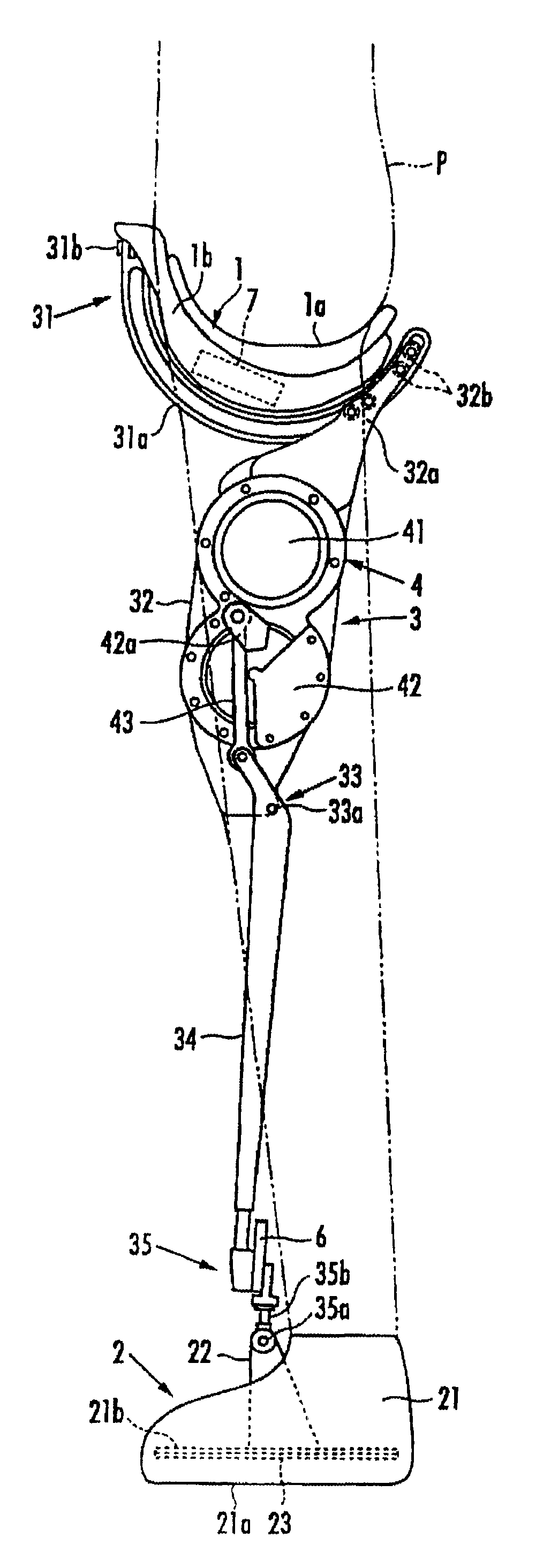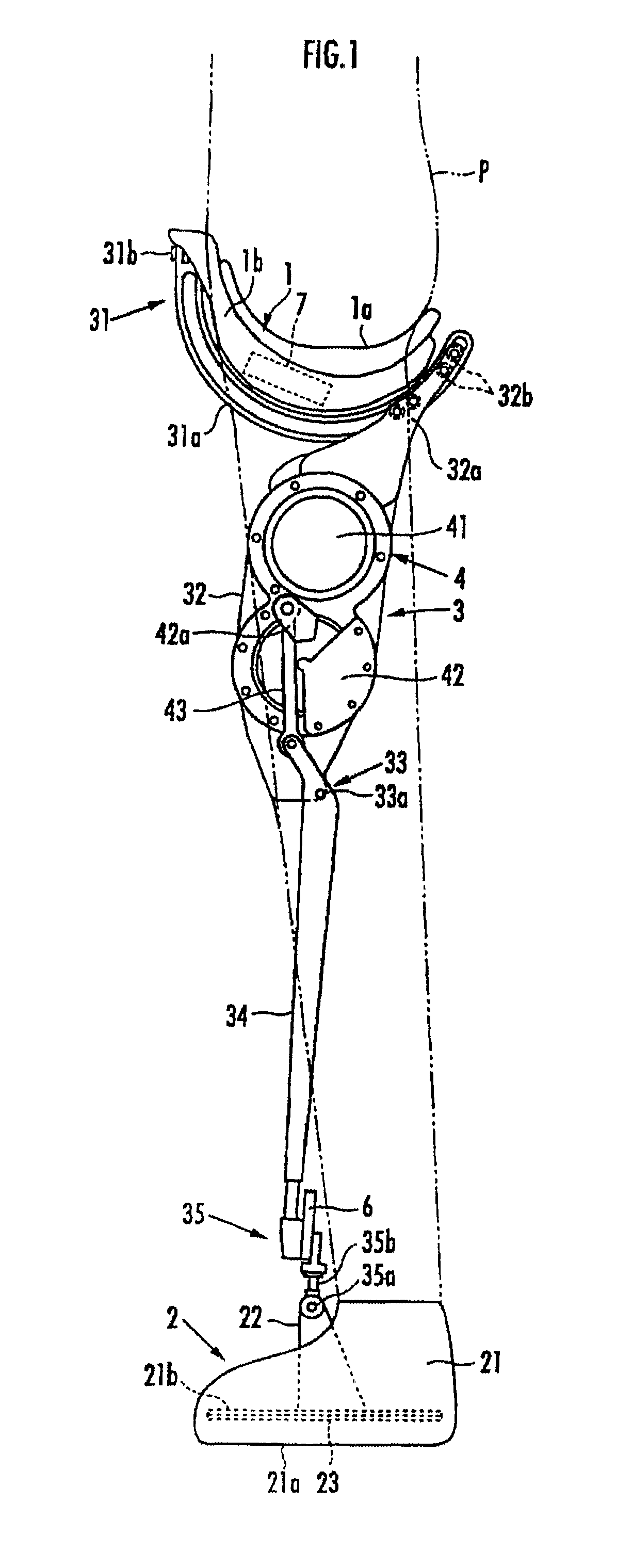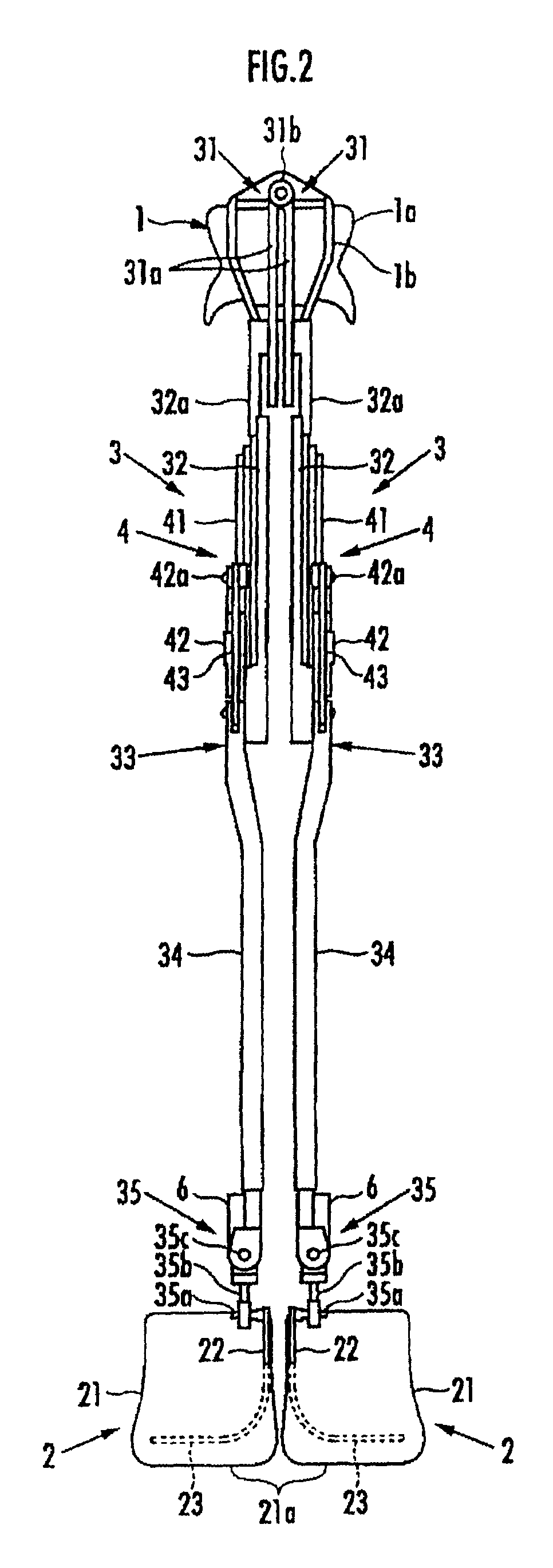Walking assistance device
a technology of assistance device and walking aid, which is applied in the field of walking assistance device, can solve the problems of inconvenient restraint for users, inability to accurately detect the tread force of users, and the free movement of feet, etc., and achieve the effect of accurate detection, accurate detection, and accurate detection
- Summary
- Abstract
- Description
- Claims
- Application Information
AI Technical Summary
Benefits of technology
Problems solved by technology
Method used
Image
Examples
Embodiment Construction
[0013]The following will describe a walking assistance device according to an embodiment of the present invention. As illustrated in FIG. 1 and FIG. 2, the walking assistance device has a seating member 1 serving as a load transmitting assembly on which a user P sits astride, a pair of right and left foot-worn assemblies 2 and 2 to be attached to the right and left feet of the user, and a pair of right and left leg links 3 and 3 provided between the seating member 1 and the right and left foot-worn assemblies 2 and 2.
[0014]Each of the leg links 3 is formed of a bendable link constituted of a first link member 32, which is connected to the seating member 1 through a first joint 31 at an upper end such that the first link member 32 is longitudinally swingable, and a second link member 34, which is connected to a lower end of the first link member 32 through a rotary second joint 33. The foot-worn assembly 2 is connected to a lower end of the second link member 34 through a third joint...
PUM
 Login to View More
Login to View More Abstract
Description
Claims
Application Information
 Login to View More
Login to View More - R&D
- Intellectual Property
- Life Sciences
- Materials
- Tech Scout
- Unparalleled Data Quality
- Higher Quality Content
- 60% Fewer Hallucinations
Browse by: Latest US Patents, China's latest patents, Technical Efficacy Thesaurus, Application Domain, Technology Topic, Popular Technical Reports.
© 2025 PatSnap. All rights reserved.Legal|Privacy policy|Modern Slavery Act Transparency Statement|Sitemap|About US| Contact US: help@patsnap.com



